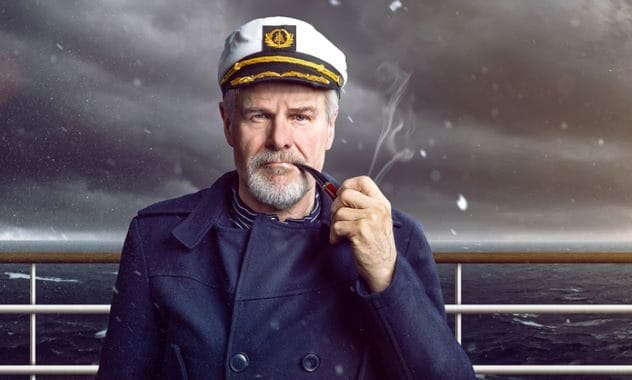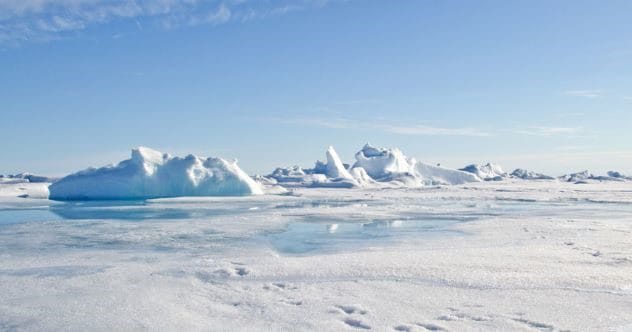Plenty of polar expeditions have ended in disaster, but the USS Polaris is a particularly strange case. Launched in 1871, it was the first mission to the North Pole entirely funded by the U.S. government. While the crew only lost one person and somehow returned home with the same number they started with, numerous failures and a power struggle made it a tale of epic survival and an international murder mystery that remains unsolved. Here are ten peculiar facts about the infamous failure of the Polaris expedition.
10 The Captain Personally Persuaded the President
After the U.S. Civil War, a young explorer named Charles Francis Hall gained recognition by leading Arctic expeditions on a shoestring budget. He made two successful trips despite his small crew and limited equipment. This helped him attract government funding for his third adventure, which aimed to reach the North Pole. Many had died trying before him, and he faced competition from his rival, scientist and explorer Dr. Isaac Hayes.
Hall needed to convince the government to back him, so he wooed President Ulysses S. Grant. The former general was knowledgeable about Arctic exploration. They discussed Hall’s plans over cigars, and Grant supported Hall’s vision. Grant attended a speech Hall gave in Lincoln Hall, where Hall introduced an Inuit couple who had returned with him from his last trip. The couple captivated the audience with their sealskin clothes and hunting tool demonstrations. Funding was approved, and President Grant appointed Hall as the expedition leader.[1]
9 The Ship Went Further North Than Any before It
In the 1800s, scientists and explorers focused on the Arctic. One goal was the Northwest Passage, in which all 129 men in Sir John Franklin’s 1845 expedition perished. Charles Hall made his first two Arctic trips searching for survivors and artifacts from the Franklin expedition. He pieced together the tragic tale by speaking with the Inuit and brought back items from Franklin’s crew.
By Hall’s third expedition, the goal was the North Pole. Hall reached latitude 82° 29′ N, closer than any ship before him. Unable to push further through the ice, he and his crew spent the harsh winter in northern Greenland, at a spot he named “Thank God Harbor.” This is where things went wrong.[2]
8 The Captain Might Have Been Poisoned
Hall’s sudden death on November 8, 1871, was the most infamous event of this trip. After returning from a two-week sled journey and drinking coffee on October 24, Hall became seriously ill, partially paralyzed and delirious. The ship’s lead scientist, German surgeon Emil Bessels, blamed a stroke. But Hall accused Bessels of poisoning him and refused treatment from him.
An inquiry sided with Bessels, concluding Hall died of a stroke. However, in 1968, a professor writing a biography of Hall exhumed the captain’s body and submitted samples for chemical analysis. Lethal doses of arsenic were found consumed in Hall’s final weeks, confirming suspicions that Hall was poisoned, likely by Bessels.
Why Bessels? Though arsenic was common, the dose given to Hall was unusual, designed to simulate a stroke. It’s unlikely anyone else knew how to do this.[3]
7 A Love Triangle Might Have Been a Motive

If Bessels murdered Hall, he must have had a motive. The scientist and his team made it clear they didn’t respect their captain, but was that enough? Richard Parry, investigating the expedition for a 2001 book, theorized that Bismarck ordered Bessels to sabotage the journey because he felt threatened by an American presence at the North Pole.
In 2015, a letter from Hall to a young female artist, Miss Vinnie Ream, surfaced. Ream created Abraham Lincoln statues, and a bust of Lincoln that Hall displayed in his cabin was given to him by her. Bessels also corresponded and socialized with Ream. Their letters suggest their connection was more than friendly. Russell Potter, who found the letters, thinks this love triangle provides an explanation for Hall’s poisoning, although it can never be 100% confirmed.[4]
6 Hall Was Not Officially a “Captain” nor a Scientist

Hall was ambitious and driven. After spending eight years living among Inuit on previous trips, he knew how to survive in the Arctic. But his crew didn’t respect him. This was probably not enough to murder him, but it didn’t help. He lacked real authority. When he applied for government funding, he wasn’t entitled to call himself “Captain” because he had never served in the Navy or commanded a vessel before.
On the Polaris, command became split among Hall, navigator Sydney Budington, and assistant navigator George Tyson. Hall lacked scientific credentials, leaving high school before graduating and being self-taught. Before becoming an Arctic explorer, he worked as a publisher and engraver. When officials questioned his lack of education, Hall pointed out how most Arctic explorers did not have a formal scientific background yet contributed to the field.[5]
5 The Navigator Did Not Want to Go to the North Pole
If it hadn’t been for the arsenic in Hall’s body, another suspect might have been his navigator, Sydney Budington. Hall himself thought Budington was involved. The navigator was an experienced whaling boat captain who had a history with Hall, the two having fallen out on a previous trip.
Budington described the attempt to reach the North Pole as “a damned fool’s errand.” Yes, one of the ship’s leaders didn’t want to be there. He turned the ship around as soon as possible after Hall’s death. This didn’t save them from disasters, calling Budington’s leadership into question.[6]
4 The Expedition Was Stranded in the Arctic Three Times

The USS Polaris was a steam-powered former naval tugboat. After the Civil War, its hull was reinforced with oak and the bow sheathed in iron to ready it for the Arctic ice. When the ice proved too much, Hall ordered the ship to anchor at Thank God Harbor. There, they spent the winter, and Hall died. Replacement captain Sydney Budington turned the ship south in August 1872, but two months later, it ran aground on a submerged iceberg after strong winds set it adrift.
When the ship began to run low on coal because Budington had allowed the crew to use the supplies recklessly, he ran the ship aground in Greenland, where the Inuit helped the crew build a hut and survive the winter. They built two more boats from wood to continue their journey, eventually being rescued by a whaler in June 1873.[7]
3 Some of the Crew Drifted on Ice for Six Months
When strong winds caused Budington to lose control of the Polaris, and it ran aground on an iceberg, the captain ordered the ship’s supplies to be thrown overboard onto the ice to buoy the ship. Nineteen of the crew clambered onto the ice, which broke away from the ship amid the darkness and confusion. The 19 were stranded on an ice floe, which would have been deadly had it not been for the Inuit among them.
They survived for six months in the snow before being rescued, but life stranded on the ice was not easy. Their Thanksgiving meal in 1872 consisted of frozen seal entrails. Budington spent merely a single day scanning the horizon for his missing crew before proceeding south.[8]
2 They Returned With the Same Number of Crew Members
Despite frequently courting disaster, besides Hall, all of the Polaris’s crew safely returned, a huge feat, considering Franklin’s expedition had cost the lives of 129 men. The Polaris expedition returned with the same number of people it had left with. How could this be when their captain had been murdered?
One of the Inuit trapped with the group on the ice floe, “Hannah” (Tookoolito), gave birth to a baby girl who survived the journey back.[9]
1 Two Search Vessels Would Later Be Caught in Their Own Arctic Disaster
In June 1873, the USS Juniata set sail in search of survivors from the Polaris expedition. After reaching Labrador, a smaller vessel called the Little Juniata, headed by George DeLong and Charles Chipp, was launched. They determined that the Polaris’s survivors had already been rescued. In 1879, DeLong returned to the Arctic as commander of the Jeannette expedition to explore an unknown region north of Alaska and Siberia. Chipp accompanied him.
The Jeannette got stuck in ice for two years, constantly in danger of being crushed. On June 12, 1881, the crew abandoned ship into five lifeboats. Chipp’s boat sunk during a storm, and DeLong’s became separated from two of the others. He reached Siberia and sent the strongest members of his party to seek help. They reached a village, but the harsh winter made it impossible to find DeLong again. He froze with his remaining men at their camp in northern Siberia.[10]
The Polaris Expedition is a story of ambition, mystery, and survival against the odds. From a possibly poisoned captain, to a crew stranded on ice, and search parties facing their own disasters this journey demonstrates the perils of Arctic exploration. What do you make of the Captain’s death? Was it murder? Share your thoughts below!










